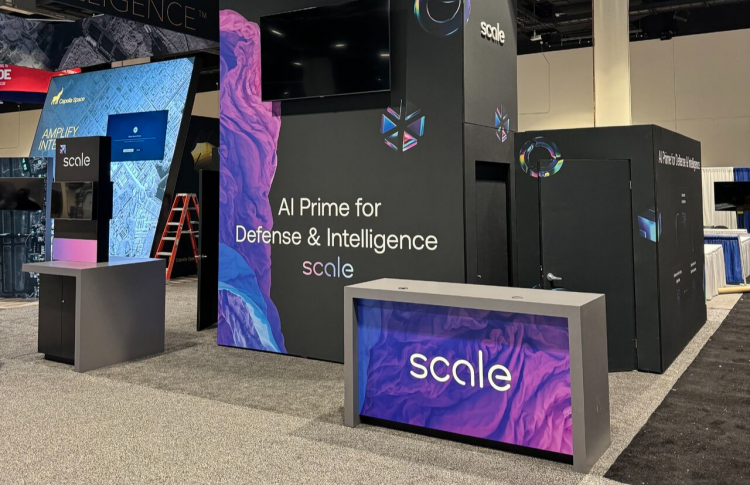Meta just invested billions in Scale AI. Here’s why this company is critical to the future of artificial intelligence.
Scale AI: The Quiet Giant Powering the AI Revolution
Chances are, you’ve never heard of Scale AI — but if you’ve used ChatGPT, watched a self-driving car in action, or seen AI-generated content online, this company has likely played a part. Behind the scenes, Scale AI is quietly helping build the future by doing something surprisingly simple: making data smarter.
In 2025, it’s one of the most important companies in artificial intelligence. And the rest of the world is starting to notice — especially after Meta’s jaw-dropping $14.8 billion investment in the company this year.
Let’s break down what Scale AI actually does, why everyone is talking about it now, and what it means for businesses, developers, and the future of AI. Read more
What Is Scale AI?

At its core, Scale AI helps AI systems learn faster and more accurately by giving them high-quality, human-checked data. Think of AI like a student — it needs textbooks, examples, and lots of practice problems to get smart. Scale AI creates those practice problems.
Founded in 2016 by Alexandr Wang — who was just 19 at the time — the company started by labeling image data. Today, it works with big names like OpenAI, Microsoft, Meta, Toyota, and the U.S. military, helping them train everything from language models to autonomous vehicles.
Scale’s secret sauce? A blend of AI and real humans working together. Their system uses machine learning to make guesses, but real people step in to check, fix, and improve the results — ensuring that the data is accurate and useful.
Why Is Everyone Talking About Scale AI Now?
The spotlight hit hard in early 2025, when Meta (formerly Facebook) announced it was investing $14.8 billion to buy nearly half of Scale AI. That’s not pocket change — and it says a lot about where the future of AI is headed.
Not only that, but Scale’s CEO Alexandr Wang is now joining Meta to lead a new “superintelligence” lab. It’s clear Meta sees Scale as essential to building smarter, safer, and more useful AI systems.
This is one of the biggest private AI deals in history — and it could change how tech giants train their AI forever.
How Scale AI Helps Build Smarter AI
So what does Scale actually do for these big companies?
1. Better Training Data
AI is only as good as the data you feed it. Scale helps companies:
- Label images, videos, text, and audio accurately.
- Clean messy datasets.
- Fine-tune language models like GPT using real human feedback (called RLHF).
2. Safer AI Models
Through its SEAL Lab, Scale helps companies evaluate AI models before they go public — spotting bias, hallucinations, or safety issues.
3. Domain Expertise
Need to train a finance bot? Medical chatbot? Scale finds real experts in those fields to label and review the training data. This means you’re not just getting random annotations — you’re getting specialist-level input.
4. End-to-End AI Infrastructure
From data prep to model testing, Scale handles the entire pipeline. That’s huge for companies that don’t have the time or team to build it all from scratch.
Real-World Use Cases
Here’s where you’ll see Scale AI in action:
- Self-driving cars: Labeling road signs, pedestrians, other vehicles, and even weather effects in camera footage.
- Chatbots and LLMs: Improving the way AI answers questions by adding human-reviewed examples and feedback.
- Military defense: Creating AI-powered decision tools that support national security efforts.
- Healthcare: Training AI to understand X-rays, diagnose conditions, or summarize patient notes safely.
Meta’s Big Move — and Why It Matters
Meta’s $14.8 billion bet on Scale AI isn’t just about owning part of a hot startup. It’s about control — controlling the quality of data that feeds its own AI systems, like Llama (Meta’s open-source large language model).
By working directly with Scale, Meta can:
- Get faster, cleaner, safer data to train with.
- Improve how its AI tools like WhatsApp, Instagram, and Threads handle content.
- Compete better with OpenAI, Google DeepMind, and Anthropic.
And with Wang joining Meta’s AI team, they’re not just investing in tools — they’re investing in leadership and vision.
What Makes Scale AI Different?
There are plenty of data-labeling companies out there, but Scale stands out for a few key reasons:
✅ Expert Workforce
They use real domain experts, not just generic gig workers. That means more accurate and valuable data, especially for technical fields.
✅ Focus on Safety
Their SEAL Lab tests models like a “red team,” spotting harmful content or bugs before it’s too late.
✅ Full AI Workflow
Most companies only label data. Scale handles everything — from collecting data to training, feedback, and testing.
✅ Trusted by Governments
When the U.S. military trusts your tools, you’re clearly doing something right.
The Not-So-Glamorous Side
No company is perfect — and Scale has faced criticism too. Most notably:
- Some workers on platforms like Remotasks (which Scale uses) have reported low pay and difficult working conditions.
- There have been lawsuits related to content moderation and emotional harm.
As Scale grows and takes on more sensitive projects, especially in healthcare and defense, ethical data sourcing and fair labor practices will become even more important.
What This Means for Startups and Developers
If you’re building anything with AI in 2025, Scale is worth watching — or even working with.
For Startups:
You can use their APIs to speed up training without hiring a massive data team.
For Developers:
You get better model performance with less tweaking, thanks to high-quality human-reviewed data.
For Enterprises:
You can safely scale GenAI solutions — from customer service bots to internal tools — knowing your models are trained on accurate, compliant data.
Pro Tips for Using Scale AI
Here’s how to get the most out of working with a company like Scale:
- Define your data goals early – Know exactly what you want your model to learn.
- Use Scale Studio – Bring in your own experts to guide and review training data.
- Start small and test – Run early pilots to see if the data improves performance.
- Combine with RLHF – Let users give feedback and improve the model over time.
- Monitor constantly – Even perfect data ages. Keep testing and updating.
What’s Next for Scale AI?
Expect a big year ahead.
- Revenue is projected to double in 2025, crossing $2 billion.
- A possible IPO or larger stake sale could value the company at over $25 billion.
- More partnerships with governments and global companies are expected.
- Ethical practices and transparency will come under the microscope.
Final Thoughts
Scale AI might be operating quietly in the background — but it’s doing the heavy lifting that’s making today’s smartest AI systems possible. Meta’s investment proves how valuable smart, accurate, human-verified data really is.
If you’re building, training, or scaling AI in any industry, Scale AI isn’t just a nice-to-have — it could be your competitive edge.

Good